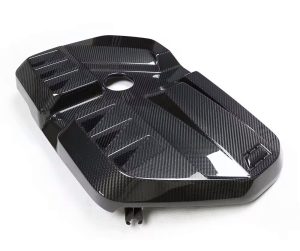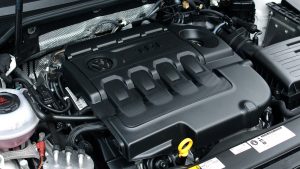When you open the hood of a modern car, one of the first things you see is a large plastic or composite panel resting neatly over the engine. This is the engine cover, an often-overlooked component that plays a more important role than many drivers realize. While some may view it as a cosmetic addition, the engine cover provides functional benefits, including noise reduction, protection of vital parts, and improved airflow management.
In this article, we will break down what engine covers do, why they matter, and when it’s time to consider replacing them.
What Is a Car Engine Cover?

A car engine cover is a molded panel, usually made of plastic, composite materials, or sometimes lightweight metals, mounted on top of the engine. It is secured with clips, bolts, or brackets and designed to serve both practical and aesthetic purposes.
Contrary to the belief that covers exist only for visual appeal, they are carefully engineered to contribute to the overall performance and longevity of the vehicle.
Functions of an Engine Cover
Engine covers are not just “decorations.” They serve multiple purposes that directly affect the engine’s operation and the driver’s experience.
Key Functions:
-
Noise Insulation – Helps reduce engine noise and vibrations entering the cabin.
-
Protection – Shields sensitive components like ignition coils, fuel injectors, and wiring from dirt, dust, and moisture.
-
Airflow Management – Directs cooling air more efficiently across engine components.
-
Safety – Reduces the risk of accidental burns or injuries when working under the hood.
-
Aesthetics – Provides a clean, uniform appearance in the engine bay.
Benefits of Engine Covers
The table below summarizes the main advantages of having a properly fitted engine cover.
| Benefit | Description |
|---|---|
| Noise Reduction | Dampens vibrations and sound for a quieter driving experience. |
| Component Protection | Prevents debris, moisture, and accidental impacts from damaging engine parts. |
| Better Cooling Efficiency | Directs airflow where needed, helping regulate engine temperature. |
| Safety | Reduces risk of burns by covering hot engine components. |
| Clean Appearance | Gives the engine bay a polished and organized look. |
Common Problems with Engine Covers
Like any other engine component, covers can wear out, crack, or fail over time. Here are the most common issues:
-
Cracked or Broken Plastic – Exposure to heat and vibrations can cause plastic covers to crack.
-
Loose Clips or Mounts – Fasteners may wear out, making the cover rattle or fall off.
-
Heat Damage – Prolonged exposure to high temperatures can warp covers.
-
Missing or Damaged Insulation – Some covers have sound-dampening insulation that deteriorates with age.
When Should You Replace an Engine Cover?
Although engine covers don’t wear out as quickly as mechanical parts, there are certain signs that indicate it’s time for a replacement:
Replacement Checklist:
-
Cover is cracked, warped, or broken.
-
Fasteners or mounting clips are damaged and cannot secure it properly.
-
Insulation material has worn away, causing increased cabin noise.
-
Cover no longer fits snugly due to deformation.
-
You notice rattling sounds from the engine bay.
If you encounter any of these problems, replacing the engine cover is advisable to maintain protection and performance.
For quality replacements, you can always buy Engine Cover online to ensure proper fit and durability for your vehicle.
How to Maintain an Engine Cover
Even though engine covers require little maintenance, regular care extends their lifespan.
Maintenance Tips:
-
Inspect regularly – Check for cracks, broken clips, or loose fittings.
-
Clean properly – Use a damp cloth to wipe dirt; avoid harsh chemicals that may weaken plastic.
-
Check insulation – Ensure soundproofing material is intact.
-
Avoid unnecessary removal – Repeated removal can wear out clips and mounts.
-
Secure correctly – Always reattach with original fasteners to prevent rattling.
Plastic vs. Metal Engine Covers
Not all engine covers are the same — some vehicles use lightweight plastic, while others may use reinforced metal.
| Type | Advantages | Disadvantages |
|---|---|---|
| Plastic | Lightweight, affordable, easy to mold into shape | Can crack, less durable under extreme heat |
| Metal | Strong, durable, heat-resistant | Heavier, more expensive, may corrode over time |
Most modern cars use plastic or composite covers for a balance of weight, durability, and cost efficiency.
Do You Really Need an Engine Cover?

Some drivers remove their engine covers, thinking it improves cooling or access to components. However, this can be a mistake.
Without an engine cover:
-
Engine noise will be noticeably louder.
-
Dirt, moisture, and debris may damage delicate components.
-
Airflow efficiency may be reduced, leading to uneven cooling.
-
The resale value of your vehicle may decrease due to poor aesthetics.
Therefore, keeping a properly functioning cover is recommended for long-term reliability.
Conclusion
Engine covers may seem like a small detail, but they play a significant role in protecting your engine, reducing noise, managing airflow, and improving safety. A damaged or missing cover not only affects performance but can also expose vital components to unnecessary risks.
Regular inspections, cleaning, and timely replacements will ensure your cover continues to serve its purpose effectively. If your vehicle’s cover is cracked, loose, or missing, don’t ignore it — buy Engine Cover online to restore both function and appearance under your hood.